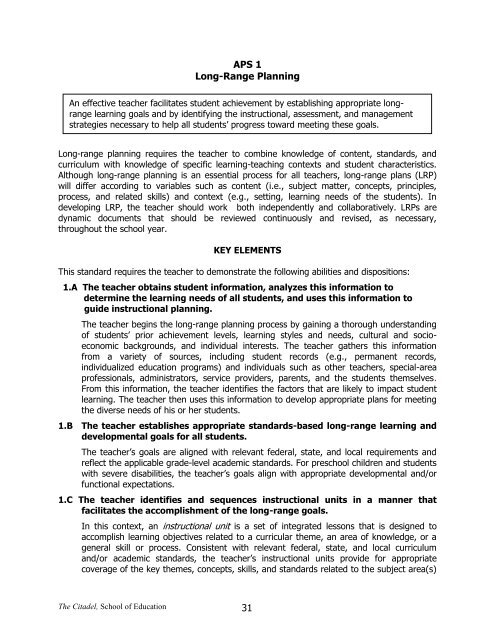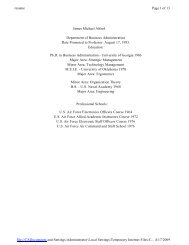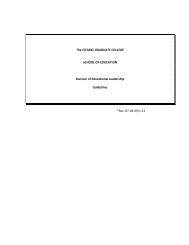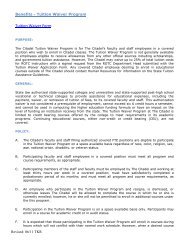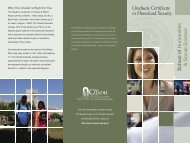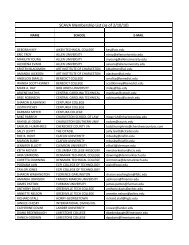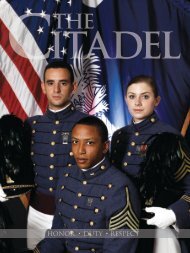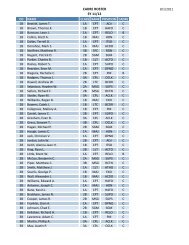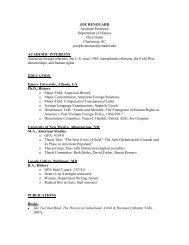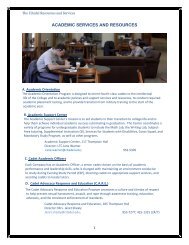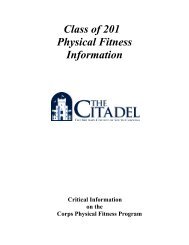Guidelines for Student Teaching Internship - The Citadel
Guidelines for Student Teaching Internship - The Citadel
Guidelines for Student Teaching Internship - The Citadel
You also want an ePaper? Increase the reach of your titles
YUMPU automatically turns print PDFs into web optimized ePapers that Google loves.
APS 1Long-Range PlanningAn effective teacher facilitates student achievement by establishing appropriate longrangelearning goals and by identifying the instructional, assessment, and managementstrategies necessary to help all students’ progress toward meeting these goals.Long-range planning requires the teacher to combine knowledge of content, standards, andcurriculum with knowledge of specific learning-teaching contexts and student characteristics.Although long-range planning is an essential process <strong>for</strong> all teachers, long-range plans (LRP)will differ according to variables such as content (i.e., subject matter, concepts, principles,process, and related skills) and context (e.g., setting, learning needs of the students). Indeveloping LRP, the teacher should work both independently and collaboratively. LRPs aredynamic documents that should be reviewed continuously and revised, as necessary,throughout the school year.KEY ELEMENTSThis standard requires the teacher to demonstrate the following abilities and dispositions:1.A <strong>The</strong> teacher obtains student in<strong>for</strong>mation, analyzes this in<strong>for</strong>mation todetermine the learning needs of all students, and uses this in<strong>for</strong>mation toguide instructional planning.<strong>The</strong> teacher begins the long-range planning process by gaining a thorough understandingof students’ prior achievement levels, learning styles and needs, cultural and socioeconomicbackgrounds, and individual interests. <strong>The</strong> teacher gathers this in<strong>for</strong>mationfrom a variety of sources, including student records (e.g., permanent records,individualized education programs) and individuals such as other teachers, special-areaprofessionals, administrators, service providers, parents, and the students themselves.From this in<strong>for</strong>mation, the teacher identifies the factors that are likely to impact studentlearning. <strong>The</strong> teacher then uses this in<strong>for</strong>mation to develop appropriate plans <strong>for</strong> meetingthe diverse needs of his or her students.1.B <strong>The</strong> teacher establishes appropriate standards-based long-range learning anddevelopmental goals <strong>for</strong> all students.<strong>The</strong> teacher’s goals are aligned with relevant federal, state, and local requirements andreflect the applicable grade-level academic standards. For preschool children and studentswith severe disabilities, the teacher’s goals align with appropriate developmental and/orfunctional expectations.1.C <strong>The</strong> teacher identifies and sequences instructional units in a manner thatfacilitates the accomplishment of the long-range goals.In this context, an instructional unit is a set of integrated lessons that is designed toaccomplish learning objectives related to a curricular theme, an area of knowledge, or ageneral skill or process. Consistent with relevant federal, state, and local curriculumand/or academic standards, the teacher’s instructional units provide <strong>for</strong> appropriatecoverage of the key themes, concepts, skills, and standards related to the subject area(s)<strong>The</strong> <strong>Citadel</strong>, School of Education 31


